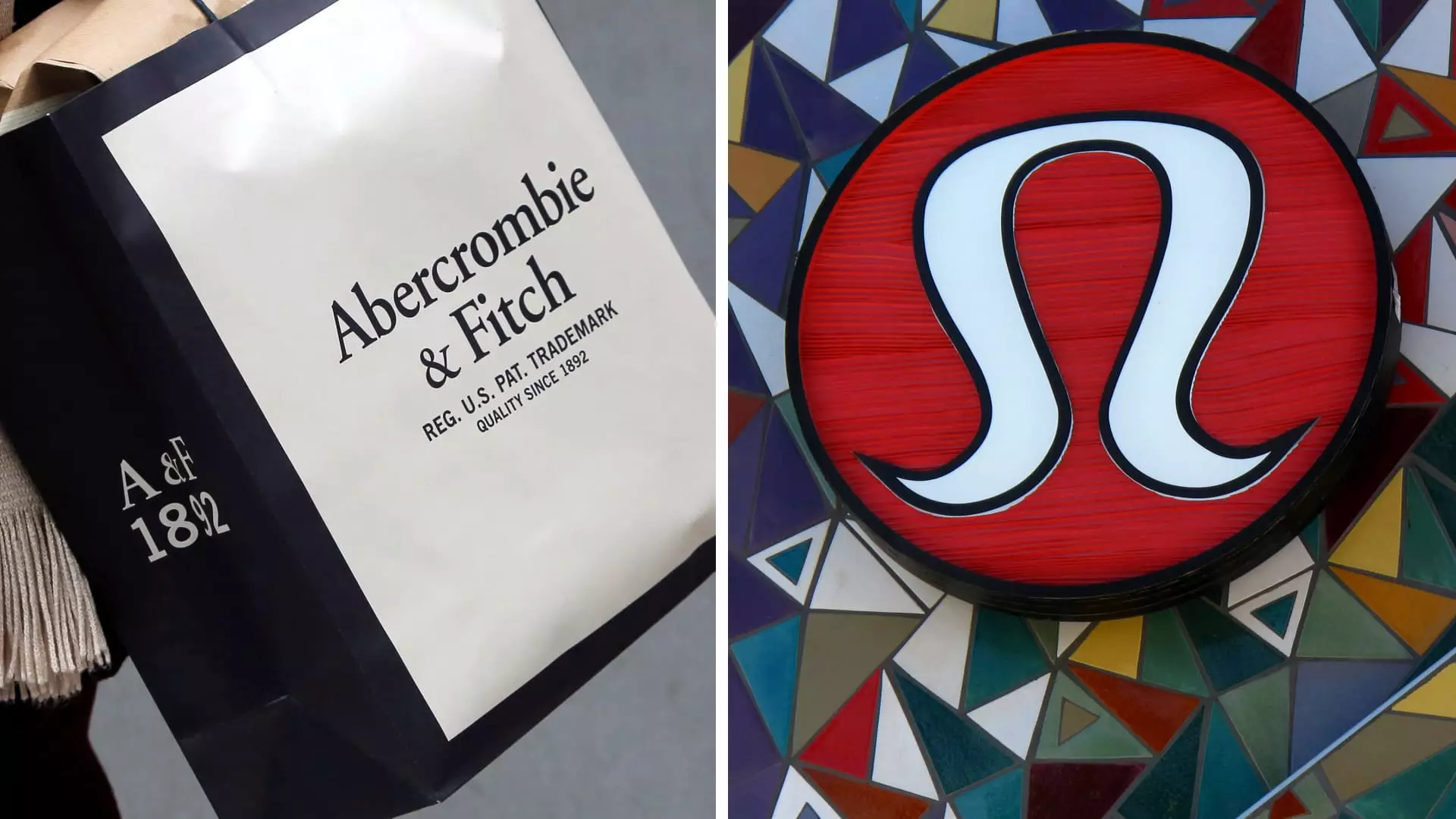As the holiday season approached in 2023, major retailers faced a complex set of challenges and opportunities. Despite early reports heralding improved sales results for powerhouses such as Lululemon and Abercrombie & Fitch, investor sentiment painted a different picture. Many retailers saw their stock prices decline even in the face of positive sales forecasts, a phenomenon that invites deeper examination of market expectations and the realities of consumer behavior.
Investor Reactions to Sales Reports
On a day when leading retailers announced their improved fourth-quarter outlooks, the immediate market reaction was less than enthusiastic, illustrating a disconnect between performance metrics and investor expectations. For instance, in a surprising turn, Lululemon projected a noteworthy sales growth of between 11% and 12%, raising its revenue expectations significantly from earlier estimations. This kind of growth typically signals high consumer demand; however, even after this upbeat announcement, Lululemon’s shares fell, showcasing Wall Street’s skepticism.
Abercrombie & Fitch’s slight increase in sales guidance also failed to buoy investor confidence, resulting in a steep decline in its stock price. The company reported a net sales growth forecast adjustment upward to 7%-8%, yet this is starkly contrasted with last year’s staggering 21% increase during the same holiday period. In a stock market environment where consistent and explosive growth is expected, such moderation may feel disappointing to shareholders.
Different retailers experienced varying degrees of success and setbacks. Macy’s, a foundational name in retail, revealed disheartening results that echoed concerns about its deteriorating performance. Predicted sales that were either static or slightly below expectations painted a grim picture, as their shares plummeted alongside the announcement. Such outcomes reveal a critical variances in consumer engagement, branding, and market positioning.
Urban Outfitters faced a mixed bag in its holiday performance. Although it experienced a commendable 10% growth year-over-year, the overall impression remains subdued with a notable decline in comparable sales for its main brand. The differing performance across its subsidiaries begs the question of whether a singular brand message can effectively resonate in a fragmented market.
Additionally, American Eagle also navigated an opportunity blended with challenges, revising its operating profit expectations upwards but ultimately setting the stage for anticipated revenue declines due to fiscal calendar anomalies. The retail landscape has become increasingly complex, as companies grapple with shifts that affect overall sales figures while juggling consumer expectations and their operational capabilities.
The Broader Economic Context
As the National Retail Federation suggested, expectations for the holiday shopping season were more tempered this year compared to the post-pandemic retail boom. With anticipated growth between 2.5% and 3.5%, real growth figures are expected to be minimalist when factoring in inflation and other economic stressors. Retailers need to adjust strategies to cope with these ongoing economic realities, leading to a more cautious approach to forecasting and inventory management.
Despite the current economic headwinds, transactions during the peak holiday period showed a modest increase of 3.8%, as indicated by Mastercard SpendingPulse. This slight uptick in retail sales, however, does not automatically translate to sustained growth for every retailer or a resurgence of confidence among investors, who remain vigilant and perhaps overly critical, looking for clear indications of solid, dependable performance.
With market volatility challenging historical growth trajectories, companies like Abercrombie are shifting focus from sheer growth to a balanced approach that emphasizes sustainable profitability. This pivot reflects a broader industry trend wherein companies are not only aiming for greater revenue but are also committed to maintaining healthy margins and shareholder value over the long term. This balancing act may redefine success in retail going forward.
Abercrombie’s CEO articulated this new direction, underscoring a commitment to building a resilient foundation through operational excellence rather than continuously chasing aggressive sales targets. The long-term play may yield a healthier balance sheet but might come at the expense of short-term stock price performance.
The holiday retail landscape in 2023 remains a tale of two narratives: the celebration of improved results against a backdrop of investor skepticism. In this evolving environment, retailers must adapt strategies, focus on sustainable growth, and ensure that they are not merely responding to the immediate market fluctuations but rather preparing for long-term challenges. As consumer expectations shift, the ability to stay relevant and financially robust becomes paramount, urging retailers to rethink their strategies for engaging shoppers in an increasingly unpredictable marketplace.

